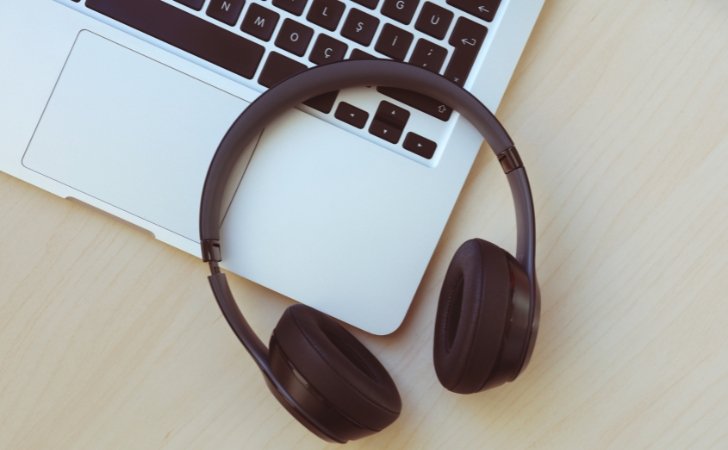AFFILIATE DISCLOSURE
This post may contain affiliate links. An affiliate means Escribr may earn referral fees if you make a purchase through our link without any extra cost to you. It helps to keep this blog afloat. Thanks for your support!
Did you know that by visiting this blog, you are doing good in the world? READ THIS.
Transcription is a valuable skill that plays a vital role in various industries, including journalism, academia, legal proceedings, market research, and more.
As a transcriber, your role is to convert audio or video recordings into written form, providing accurate and reliable transcripts.
Best practices in audio transcription involve utilizing high-quality headphones or speakers to ensure clear audio comprehension, using transcription software or tools to enhance efficiency and accuracy, and implementing proper formatting and proofreading techniques.
Being a great transcriber requires a combination of technical expertise, attention to detail, and effective communication skills.
This article aims to provide you with a comprehensive guide on how to become a great
transcriber, covering essential tips and best practices to optimize your transcription process.
1. Develop Excellent Listening Skills
Developing excellent listening skills is crucial for anyone aspiring to be a transcriber or improve their transcription abilities.
The ability to listen attentively and accurately comprehend spoken language is the foundation of this skill set.
In this blog post, we will delve deeper into how you can enhance your listening skills to become an exceptional transcriber.
One effective way to improve your listening skills is to expose yourself to a variety of audio samples.
Listening to different accents, speech patterns, and background noises can help you become more comfortable and adaptable in understanding diverse sources of audio.
Consider using headphones while listening to audio samples, as they can help you focus and eliminate external distractions.
Additionally, exposing yourself to audio with varying audio qualities, such as low volume or poor recording, can further challenge your listening abilities and train you to catch even the faintest of sounds.
Practicing transcribing different types of audio materials is another valuable method to refine your listening skills.
Engage with a wide range of content, such as interviews, speeches, podcasts, or even recorded conversations.
Each of these contexts presents unique challenges, and by practicing transcribing them, you can become more adept at deciphering different speaking styles, tones, and vocabulary choices.
This exercise not only improves your listening abilities but also enhances your familiarity with diverse topics and subject matters.
When listening to audio for transcription purposes, it is essential to pay close attention to various nuances in the speaker’s delivery.
Factors like tone, speed, emphasis, and pauses can significantly impact the accuracy and understanding of the content.
A speaker’s tone can convey emotions, intentions, and nuances that are crucial for accurate transcription.
Speed and emphasis provide valuable cues for understanding the speaker’s intended message and can help you identify crucial information that needs to be captured in the transcript.
By training yourself to discern these subtleties, you will develop a more comprehensive and nuanced understanding of the audio content.
Furthermore, developing active listening skills can greatly enhance your transcription abilities.
Active listening involves not only hearing the words but also processing and comprehending the meaning behind them.
As you listen to audio, make a conscious effort to engage with the content and mentally process the information being conveyed.
This can involve mentally summarizing key points, visualizing the context, or actively anticipating the speaker’s next words.
Active listening improves your overall comprehension and helps you produce accurate and coherent transcriptions.
To further enhance your listening skills, consider seeking feedback from experienced transcribers or language professionals.
They can provide valuable insights and guidance on areas where you can improve.
Additionally, utilizing available resources such as online courses or specialized software designed to enhance transcription skills can also be beneficial.
In conclusion, developing excellent listening skills is crucial for anyone aspiring to excel in transcription.
By exposing yourself to diverse audio samples, practicing transcribing various types of content, paying attention to nuances in tone and delivery, and actively engaging with the audio, you can significantly enhance your listening abilities.
Remember that becoming an exceptional transcriber requires time, practice, and a genuine commitment to continually improve your skills.
2. Invest in Quality Equipment
Having the right tools can significantly impact your transcription efficiency and accuracy.
Invest in a good quality headset or earphones to improve audio clarity.
Look for noise-canceling features to minimize background noise interference.
Consider using a foot pedal that allows you to control audio playback, pausing, rewinding, and fast-forwarding with your feet, leaving your hands free to type.
Using transcription software with time-stamping features can also streamline your workflow and help maintain synchronization between the audio and transcript.
3. Familiarize Yourself with Style Guides
Different industries and clients may have specific style preferences and guidelines for transcription.
It’s essential to familiarize yourself with these requirements to deliver accurate and consistent transcripts.
Popular style guides such as The Chicago Manual of Style, Associated Press (AP) Stylebook, or industry-specific guides provide guidelines on punctuation, abbreviations, speaker identification, and formatting.
Understanding and adhering to these conventions ensures that your transcripts meet the expected standards and maintain consistency across different projects.
4. Develop Fast and Accurate Typing Skills
Developing fast and accurate typing skills is essential for anyone looking to excel in the field of transcription.
Efficient typing allows transcribers to complete their work quickly and with precision.
To improve your typing speed, it is important to practice regularly.
There are various typing tutor software and online platforms available that offer typing exercises specifically designed to enhance typing skills.
These exercises typically involve typing out words, phrases, and sentences within a specified time frame.
Consistent practice using these tools can help you increase your typing speed over time.
It is important to focus on accuracy as well, ensuring that you are typing the correct keys without errors.
One technique to improve your typing speed is touch-typing.
Touch-typing involves typing without looking at the keyboard, relying on muscle memory to find the correct keys.
This technique enables you to type faster as your fingers instinctively know the positions of the keys.
There are online tutorials and resources available to help you learn touch-typing and practice this technique.
It may take some time and effort to become proficient, but the benefits in terms of speed and accuracy are well worth it.
Another way to expedite your typing work is by familiarizing yourself with keyboard shortcuts.
Keyboard shortcuts are key combinations that perform specific functions, such as copying and pasting text or formatting.
Learning and utilizing these shortcuts can save you valuable time by reducing unnecessary hand movements and mouse clicks.
Many software programs and applications have their own set of shortcuts, so it is beneficial to familiarize yourself with the shortcuts specific to the tools you use for transcription.
In addition to speed, it is crucial to pay attention to ergonomics while typing.
Long transcription sessions can put a strain on your hands, wrists, and shoulders if proper ergonomic practices are not followed.
Ensure that your keyboard and mouse are positioned correctly, with your wrists and arms in a comfortable and neutral position.
Consider using an ergonomic keyboard and mouse pad to provide additional support and minimize the risk of repetitive strain injuries.
Taking regular breaks and stretching exercises can also help alleviate any discomfort and maintain your overall typing performance.
Seeking feedback and learning from experienced transcribers can be immensely valuable in improving your typing skills.
They can provide tips, techniques, and insights based on their own experiences.
Additionally, there are online communities and forums where you can connect with other transcribers and exchange knowledge and best practices.
Developing fast and accurate typing skills is crucial for efficient transcription.
Regular practice using typing tutor software or online platforms, focusing on touch-typing techniques, and utilizing keyboard shortcuts can significantly enhance your typing speed.
Paying attention to ergonomics is essential to prevent strain and discomfort during long transcription sessions.
Remember that consistent practice, patience, and a commitment to improvement are key to becoming a great transcriber.
5. Improve Your Research Skills
Improving your research skills is crucial for transcribing accurately, especially when dealing with complex topics and specialized terminology.
A strong research foundation allows you to confidently transcribe unfamiliar words, acronyms, and jargon, ensuring the accuracy and quality of your transcripts.
Utilizing online resources is an excellent way to expand your knowledge and find accurate information.
Websites, online dictionaries, glossaries, and industry-specific references can provide valuable insights into unfamiliar terms or concepts.
Make it a habit to consult reliable sources during the transcription process, allowing you to fill knowledge gaps and ensure the correct representation of content.
Take advantage of search engines to explore different perspectives and find reputable sources that can enhance your understanding of the subject matter.
Dictionaries and glossaries are essential tools for a transcriber.
When encountering unfamiliar words or phrases, consult reputable dictionaries to verify their meaning and usage.
Online dictionaries often provide pronunciation guides, alternate definitions, and example sentences, which can help you accurately transcribe spoken words.
Additionally, specialized glossaries are available for various industries and fields, providing definitions and explanations of technical terms specific to those domains.
These resources are invaluable in deciphering and correctly transcribing industry-specific jargon.
In cases where the subject matter is particularly complex or unfamiliar, it may be necessary to conduct background research.
Take the time to delve deeper into the topic, familiarize yourself with key concepts, and gather relevant information.
This research will not only enhance your understanding but also help you provide context and accurately transcribe the content.
Look for reputable sources such as scholarly articles, books, or trusted websites that offer reliable information.
Taking a systematic approach to research will ensure that you produce comprehensive and accurate transcripts.
During the transcription process, it is important to clarify any ambiguities that arise.
If you encounter unclear or ambiguous terms, do not hesitate to seek clarification.
Reach out to the client or consult relevant resources to ensure accurate transcription.
Communication is key in such situations, as it helps you avoid guesswork and produce a transcript that reflects the intended meaning accurately.
In addition to utilizing external resources, developing critical thinking skills can greatly enhance your research abilities.
Approach each transcription task with a curious mindset and engage in analytical thinking.
Evaluate the information you come across, assess its credibility, and consider different perspectives.
This approach allows you to produce well-rounded and accurate transcriptions.
Continuous learning and staying updated on relevant topics are also essential for improving research skills.
Industries and fields evolve over time, introducing new terms, concepts, and trends.
Keep abreast of the latest developments by subscribing to newsletters, following reputable websites or industry-specific blogs, and participating in relevant online communities.
This proactive approach ensures that you have the necessary knowledge and resources to tackle a wide range of transcription projects.
In conclusion, enhancing your research skills is vital for accurate transcription.
Utilizing online resources, dictionaries, glossaries, and industry-specific references can help fill knowledge gaps and ensure accurate representation of content.
Conducting background research, clarifying ambiguities, and developing critical thinking skills are equally important in producing comprehensive and precise transcripts.
Stay curious, continuously learn, and embrace a systematic approach to research, and you will excel as a transcriber.
6. Master Time Management
Transcribing can be time-consuming, especially when working with lengthy recordings.
Effective time management is crucial to meet deadlines and maintain productivity.
Break down the transcription into manageable sections and set specific goals for each session.
This approach allows you to focus on small, achievable tasks rather than feeling overwhelmed by the entire project.
Use productivity tools or techniques, such as the Pomofocus, to structure your work and maintain a steady pace.
This technique involves working for a set amount of time (e.g., 55 minutes) followed by a short break (e.g., 5 minutes).
Regular breaks help maintain focus and prevent mental fatigue.
7. Proofread and Edit Thoroughly
Once you’ve completed a transcription, it’s essential to proofread and edit your work thoroughly.
Review for accuracy, grammar, punctuation, and formatting errors.
Double-check spellings, names, and technical terms. Consider using proofreading tools or asking a colleague to review your work for a fresh perspective.
Taking the time to ensure high-quality, error-free transcripts will enhance your reputation as a great transcriber.
Additionally, pay attention to formatting guidelines provided by the client or industry, ensuring that the final transcript meets the desired specifications.
8. Develop Effective Communication Skills
Being a transcriber often involves collaborating with clients, colleagues, or project managers.
Effective communication skills are essential for understanding project requirements, clarifying doubts, and delivering quality work.
Maintain open and clear communication throughout the transcription process, seeking
clarification when needed and providing regular progress updates.
Active listening and the ability to follow instructions accurately are crucial in delivering transcripts that meet client expectations.
9. Seek Feedback and Continuous Improvement
Continuous improvement is key to becoming a great transcriber.
Seek feedback from clients, colleagues, or experienced transcribers to identify areas for improvement.
Actively apply the feedback received and monitor your progress over time.
Stay updated with industry trends, software advancements, and new tools that can enhance your transcription workflow.
Participate in transcription forums, communities, or professional networks to exchange knowledge and learn from others in the field.
Wrap-Up
Becoming a great transcriber requires a combination of technical skills, attention to detail, and dedication to continuous improvement.
By developing excellent listening skills, investing in quality equipment, familiarizing yourself with style guides, honing your typing speed, improving research abilities, mastering time management, maintaining a strong proofreading and editing process, and developing effective communication skills, you can excel in this demanding field.
Remember, practice makes perfect, so keep transcribing and seeking feedback to refine your skills.
With time and dedication, you can become a sought-after transcriber, offering accurate and high-quality transcripts to clients across various industries.

 Otter.ai Alternatives Worth Trying" />
Otter.ai Alternatives Worth Trying" />







